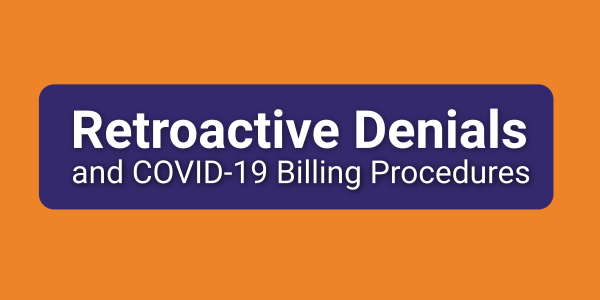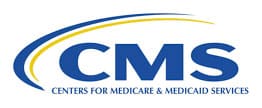
Jul 12, 2022 | MedCycle Solutions, Partner
Have you increased the amount of Telehealth visits with your patients?
If not, you and your patients may be missing out.
Over the past two years, the COVID-19 pandemic has changed the landscape of patient care and increased the need for providers to utilize virtual healthcare services. Due to the Public Health Emergency (PHE) policy update, many healthcare practices had to shut down, pause or augment their services with telemedicine to provide flexibility in patient support.
Here are four ways Telehealthcare has been implemented to provide safe, necessary care for patients while augmenting revenue.
- Stop the Spread of Contagions
With the need to quarantine, social distance, and reduce the risk for clinic staff and patients, many health practices adapted ways of providing non-emergency services. For patients with (possible) highly contagious diseases, such as COVID-19, many clinics ask patients to schedule virtual appointments to avoid possible infections and further outbreaks. This allows for keeping both the staff and patients as safe as possible while still receiving necessary treatment.
- Provide Essential Health Services
For those patients that suffer from White Coat Syndrome going to the doctor’s office causes a great deal of stress and anxiety. By allowing patients to access care in the comfort of their own home for managing chronic health conditions, routine services, prescriptions, and referrals for testing and labs, this allows for greater patient access. Plus, it has the added benefit of reduced overhead costs associated with cleaning and turning exam rooms.
- Provide Physical and Occupational Therapy Healthcare
Accidents happen. Whether motor vehicle accidents, workplace injuries, or trips and falls – PT and OT is imperative to keep patients mobile and progressing. Many providers offer hybrid services with virtual appointments for patients to keep them mobile while supervising and adapting exercises in their home environments.
- Provide Mental and Behavioral Healthcare
Mental and behavioral healthcare is one of many patient-care needs. This is especially true for long-term residential care. Many nursing home facilities transitioned to telemedicine during the COVID-19 pandemic.
The U.S. Department of Health and Human Services, via the Centers for Medicare & Medicaid Services (CMS) heavily promoted the switch to Telehealth as infection prevention and control measures. They’ve made digital resources available that offer behavioral health and best practice guides for long-term nursing homes, a telemedicine tool kit, as well as other guidance.
If you think your practice and patients can benefit from implementing telehealth visits stay tuned for our next article on 5 Resources for Implementing Telehealth & Telemedicine.
Mariellen Mezzacappa has a variety of experience in the medical field. She has worked for doctors, hospitals, pharmacies, and insurance companies. Her experience includes bill review and coding with a wide range from EAPG 3M, DRG, Workers Compensation to Appeals and coder Affidavits for Litigation. She provides verification of code selection for operation reports, documentation review, and credentialing. Additionally, she has worked on operation policies, compliance training, and project management.
MedCycle Solutions provides Revenue Cycle Management, Credentialing, Outsourced Coding, and Consulting Services to a number of healthcare providers in a variety of specialties. To find out more about MedCycle Solutions services please visit www.MedCycleSolutions.com.

Apr 6, 2022 | MedCycle Solutions, Partner
Although Telemedicine has been around for years, it was really the COVID-19 pandemic that expedited the need for implementing these services rapidly and on a larger scale.
According to Medicaid.gov “telemedicine seeks to improve a patient’s health by permitting two-way, real time interactive communication between the patient, and physician or practitioner at the distant site.” This can be accomplished via telephone, video calls, or through web-based applications utilizing a microphone and video camera.
In our previous article, 4 Ways Telehealth Has Changed the Landscape of Patient Care, we discussed ways practitioners can provide safe, necessary patient care while providing a cost-effective alternative to augment revenue.
To assist in navigating telemedicine/telehealth, we’ve provided five telehealth links for providing healthcare.
1. Telehealth for Providers: What You Need to Know
The Centers for Medicare & Medicaid Services (CMS) provides a 17-page document with electronic links for telehealth and telemedicine. This resource is for providers who wish to establish permanent programs. It includes links to vendors, patient monitoring, documentation tools, etc.
2. CMS List of Telehealth Services
The CMS have made available resources for medical billing and coding. This resource link contains the 2022 medical coding schedule for allowed services for Medicare telehealth services.
3. How to Get or Provide Remote Health Care
The Health Resources & Services Administration (HRSA) provides information for both patients and providers on telehealth services. Providers can get information on remote care, find recent COVID-19 reimbursement, billing, and policy changes.
4. Introduction to Telehealth for Behavioral Health
The HRSA provides information on getting started with providing Behavioral Telehealth. This may also be referred to as telebehavioral health, telemental health, telepsychiatry, or telepsychology. There are resources for developing a Telehealth strategy, billing, and preparing patients along with many other resources.
5. Is Telehealth Viable for Mental Health Needs Post-Pandemic?
The American Association of Post-Acute Care Nursing (AAPACN) provides an in-depth article meant to help nursing home facilities walk thru providing mental and behavioral healthcare in its facilities. Prior to COVID-19, long-term care facilities didn’t see the need for technology. COVID-19 proved that by utilizing smaller technology, such as iPads, residents are able to get safe, immediate mental and behavioral health care.
MedCycle Solutions provides Revenue Cycle Management, Credentialing, Outsourced Coding, and Consulting Services to a number of healthcare providers in a variety of specialties. To find out more about MedCycle Solutions services please visit www.MedCycleSolutions.com.

Mar 15, 2022 | MedCycle Solutions, Partner
By Ranadene Tapio, MBA, CMRS, CPCS
As healthcare delivery gets more complex, patient reimbursement decreases, and patient demand increases, practices are forced to reevaluate their revenue cycle management (RCM) process.
Some people underestimate the importance of effective revenue cycle management. RCM is the lifeblood of your practice. It determines almost all key performance indicators and practice health.
Along with the obvious indicators, here are six positive impacts that effective revenue cycle management has on a healthcare practice.
- Collections. An effective RCM process will include a strategy for collections. This should include prompt reminders, multiple payment options and other collections best practices.
- Productivity. A commonly overlooked benefit of an effective RCM strategy is increased productivity for your staff. Your team will be able to spend less time chasing collections, correcting erroneous codes and reinventing the wheel. A well laid out process will be easy to follow and more efficient.
- Team morale. Along with increased productivity, you’re likely to see a boost in team morale as a direct benefit of a defined RCM process. When employees are productive and accomplishing goals, they are happier and find more satisfaction in their work. It’s a win/win!
- Bottom line. Possibly the best benefit of optimizing your RCM is an improved bottom line. You’ll be collecting more, spending less, attracting more patients and being more productive. Whether they’re hard benefits or soft benefits, they’ll have an impact on your bottom line.
- Patient satisfaction. With a well formulated plan in place, your practice will be running more efficiently and effectively. Patients will notice the difference that comes in better efficiency, communication and processes. In many practices, these benefits are noticed by the patients in the forms of less wait time, quicker registration and overall a more organized delivery of care.
- Compliance. An effective RCM process helps ensure compliance and protection of patient data. When a process is followed, fewer errors are made, which leads to fewer compliance issues.
Is your RCM process optimized? Is it well-developed, well-defined, and well-understood by your staff? Are you reaping the benefits of a healthy revenue cycle management process?
There are many great organizations that can help you in these areas – MedCycle Solutions is one of them. If you’re wondering how partnering in these areas could work for your practice, let’s connect.
Ranadene (Randi) Tapio, MBA, CMRS, CPCS is the Founder and CEO MedCycle Solutions, which provides Revenue Cycle Management, Credentialing, Outsourced Coding, and Consulting Services to a number of healthcare providers in a variety of specialties. To find out more about MedCycle Solutions services please visit www.MedCycleSolutions.com. You can reach Randi via email at Randi@MedCycleSolutions.com or call 320-290-6448.

Mar 8, 2022 | MedCycle Solutions, Partner
By: Winona Thomas BS HCS
According to Kaiser Health News, there has been a spike in retroactive denials for emergency department care and more patients are being caught in the middle of possibly becoming responsible for unresolved hospital bills.
Healthcare providers along with healthcare payers are finding challenges with keeping up with the evolving government guidelines for correct claim submissions of COVID-19 billing procedures. Challenges such as unnecessary claim denials, underpayment of claim payments or payment delays, and retroactive claim denials may pay tribute to increased volumes of patient billing.
In an article written in the Healthcare Financial Management Association (HFMA), Revenue Cycle leaders provide 4 tips to keep ahead of denials amid the pandemic.
- Pinpoint the most at-risk areas – Identify areas where providers are most likely to have difficulties keeping track of varying payer requirements introduced a new level of intricacy to claim processing.
- Strengthen team communications – As the workforce transitioned to a remote environment due to the pandemic, for health systems, that meant remote revenue cycle processes had not been fine-tuned across functions, presenting challenges for areas such as customer service and claim processing.
- Proactively manage relationships with payers – An organization’s ability to identify changes to payer rules around COVID-19 and telehealth claims, in real time, and keep staff informed on the variances in billing rules by payer is essential to denials prevention.
- Increase payment flexibility for patients – Health systems ramped up patient payment options — from self-service options to payment plan offerings – to ease consumers’ financial fears ex
One of the key components for healthcare providers is to be proactive with the implementation of new revenue cycle processes and procedures to facilitate improved payment and denial management strategies with healthcare payers and the consumer population.
Winona L. Thomas, BS HCS is an Account Specialist and Writer at MedCycle Solutions, which provides Revenue Cycle Management, Credentialing, Outsourced Coding, and Consulting Services to a number of healthcare providers in a variety of specialties. To find out more information about MedCycle Solutions services, please visit www.MedCycleSolutions.com.

Apr 5, 2021 | Medical Billing Software Blog, Revenue, Support and Training, Trizetto Partner Solutions
In the world of healthcare revenue cycle management, there are numerous scenarios that can put a stranglehold on your revenue if you’re not prepared. With the COVID-19 pandemic causing varying degrees of change in inpatient volumes and visits, and telemedicine coming further into play, physicians and their practices are having to quickly navigate the nuances of their financial well-being. A practice may be buttoned up from the time the patient walks in the door, but what happens after the visit will determine when the practice will get paid. This element of the revenue cycle starts with coding. Here are five medical coding challenges that will ruin your bottom line.
1. Coding to the Highest Specificity
Missing data on a claim relative to the patient’s diagnosis and procedure can easily cause a rise in denials once received by the payers, resulting in potentially thousands of dollars in write-offs. Medical coders are responsible for coding patients’ claims to the highest level of specificity, ensuring the appropriate CPT, ICD-10-CM, and HCPCS codes are applied based on the patient’s chart from the day’s services.
COVID-19 and telemedicine are frequently bringing on new codes and code sets, all with different variations and modifiers to make the matter even more complex. Medical coders spend a lot of time researching and learning new codes, but every year – and throughout the year – changes and updates are made. Payers don’t only want to know the diagnosis and the treatment; they want to know the cause as well. The Coronavirus Aid, Relief, and Economic Security Act passed in March of 2020 allows for an additional payment from Medicare of 20 percent for claim billed for inpatient COVID-19 patients, however, it was later indicated that a positive COVID-19 test must be stored in the patient’s medical records in order to be eligible for this payment. Being able to stay on top of codes specific to the patient’s diagnosis at treatment is more difficult than ever before.
2. Upcoding
While code specificity is important, so too is ensuring the claims do not contain codes for exaggerated procedures, or even procedures that were never performed, resulting in reimbursement for these false procedures. This seems logical enough, but upcoding can easily occur as a result of human error, misinterpretation of a physician’s notes, or lack of understanding of how to appropriately assign the thousands of ICD-10-CM codes in existence. To add to the pressure, the Office of the Inspector General issued a plan with objectives to prevent fraud and scams, and remedy misspending of COVID-19 response and recovery funds.
Much like under-coding or not providing enough data on the patient’s visit can create issues, upcoding can be a major contributor to financial loss for a practice. Questionable claims can be denied and sent back for corrections and appeals, but upcoding can have more serious ramifications outside of paper-pushing between coders and payers.
Whether it’s making sure the codes are in accordance with the care provided, understanding the code sets that apply for each procedure, or comprehension of the medical record, refraining from upcoding will help ensure a sturdy and compliant revenue stream.
3. Missing or Incorrect Information
There’s a common theme to coding challenges, and that’s having the sufficient information necessary. This information typically is pulled from a patient’s chart or record of a visit, which is often completed by the attending physician. However, even when a claim is submitted, providing required information relative to the procedure to the payer is critical as well. Situations such as failure to report time-based treatments (such as anesthesia, pain management, or hydration treatments) or reporting a code without proper documentation can result in denials.
Furthermore, information in a patient’s electronic health record may also contain inaccurate information. Keystrokes and other human errors can cause these situations to flare up, and it takes a diligent, thoughtful coder to read between the lines and ensure claims have the appropriate information.
4. Timeliness of Coding
The Medical Group Management Association (MGMA) suggested in their 2018 Setting Practice Standards report that a Primary Care Physician should maintain a claim submission rate of 3.11 days after the date of service, but it is becoming increasingly difficult for practices to sustain anything close to this rate. Constant changes to code sets, an increased focus on submitting claims with sufficient and compliant information, and the requirement to code claims to the highest level of specificity, can easily delay the submission by days or weeks.
Nevertheless, delays in coding and submitting claims can cause major lags in payment and substantial loss in revenue. Insurance payers have statutes of limitations that require claims to be submitted anywhere from 120 to just 60 days after the date of service. Simply put – the more time spent coding the claim, the later it will be submitted, thus increasing the odds that the claim will be denied. Expert coders are aware of this and do everything in their power to get coded claims out the door.
5. Staffing Shortages
However, finding experts well versed in coding claims quickly, accurately and in compliance with the False Claims Act is not always an easy task. As you can imagine, the increasing need for care within the senior population is causing a rise in claim volumes, and trying to find a team of coders who know the ins and outs of complex ICD-10-CM coding can easily cause a bottleneck in the revenue cycle. Health executives expressed their struggles to find talent back in 2015, and some forecasts expect a decline in commercial payments by 2024 to further hamper a C-suite’s ability to manage labor costs. The ramifications of incorrect coding are still a key topic of discussion to this day.
The time has come for practices to begin looking outside of their organization for coding support. How is your practice planning to tackle the coding conundrum? When choosing a partner for your medical coding needs, you need to pick an expert to help your practice stay on target. TriZetto Provider Solutions, a Cognizant Company, has available highly-trained, AAPC & AHIMA certified coders with the experience of getting the details right the first time and understand the importance of coding to the medical practice.
For more information about TriZetto Provider Solutions, a partner of EZClaim, visit their website, contact them, or give them a call at 800.969.3666.
ABOUT EZCLAIM:
EZClaim is a medical billing and scheduling software company that provides a best-in-class product, with correspondingly exceptional service and support. Combined, they help improve medical billing revenues. To learn more, visit EZClaim’s website, e-mail them, or call them today at 877.650.0904.
[ Contribution of the TriZetto Provider Solutions Editorial Team ]









